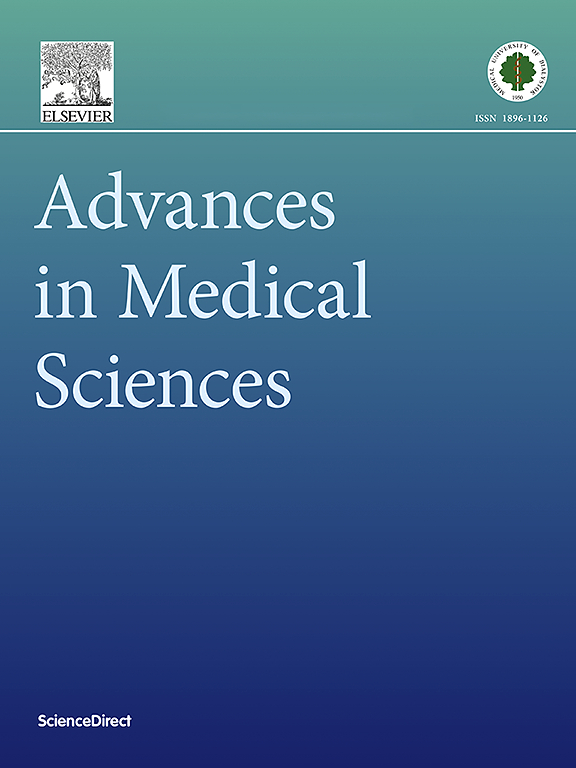Restoring impaired osteogenic differentiation of diabetic rat stromal cells using epigenetic inhibitors
IF 2.6
4区 医学
Q3 MEDICINE, RESEARCH & EXPERIMENTAL
引用次数: 0
Abstract
Purpose
Epigenetic regulation plays a crucial role in gene expression and is recognized as a key contributor to diabetes-related complications. This study explores the osteogenic differentiation potential of stem cells isolated from the periodontal ligament (PDL) and bone marrow (BM) of diabetic rats. It investigates the effects of DNA methyltransferase and histone deacetylase inhibitors on the differentiation capacity of diabetic stem cells, searching for underlying mechanisms.
Method
Diabetes was induced in 5-week-old male Wistar rats using streptozotocin (STZ). Bone parameters were assessed via micro-CT, and stem cells isolated from mandibles and femurs were treated with 5-azacytidine or Trichostatin A in osteogenic medium. Osteogenic differentiation was evaluated through alkaline phosphatase (ALP) activity, Alizarin Red staining, and mRNA expression of osteogenic markers using real-time PCR.
Results
A significant decrease in total BMD and BV/TV of the femur and mandible was observed in STZ-induced diabetic rats compared to control. Cells isolated from diabetic PDL and BM showed impaired mineralization capacity and downregulated osteogenic markers. Treatment with Trichostatin A or 5-azacytidine restored mineralization potential, increased ALP activity, and upregulated the expression of RUNX2 and β-catenin.
Conclusion
Our results revealed the underlying epigenetic mechanisms responsible for the impaired osteogenic differentiation capacity of stem cells in diabetes. These findings highlight the potential of epigenetic modulators to restore stem cell function and enhance bone regeneration. This approach holds promise for improving diabetes-related skeletal complications and advancing tissue engineering strategies, including the development of scaffold-based therapies for fracture repair, periodontal regeneration, and implant integration in diabetic patients.
利用表观遗传抑制剂恢复糖尿病大鼠基质细胞成骨分化受损。
目的:表观遗传调控在基因表达中起着至关重要的作用,被认为是糖尿病相关并发症的关键因素。本研究探讨了糖尿病大鼠牙周韧带(PDL)和骨髓(BM)干细胞的成骨分化潜力。研究DNA甲基转移酶和组蛋白去乙酰化酶抑制剂对糖尿病干细胞分化能力的影响,寻找潜在的机制。方法:采用链脲佐菌素(STZ)诱导5周龄雄性Wistar大鼠患糖尿病。通过micro-CT评估骨参数,并在成骨培养基中用5-氮扎胞苷或曲古霉素A处理从下颌骨和股骨分离的干细胞。通过碱性磷酸酶(ALP)活性、茜素红染色和成骨标志物mRNA的实时PCR表达来评估成骨分化。结果:与对照组相比,stz诱导的糖尿病大鼠股骨和下颌骨的总骨密度和BV/TV明显降低。从糖尿病PDL和BM分离的细胞显示矿化能力受损和成骨标志物下调。曲古霉素A或5-氮杂胞苷处理恢复矿化电位,增加ALP活性,上调RUNX2和β-catenin的表达。结论:我们的研究结果揭示了糖尿病干细胞成骨分化能力受损的潜在表观遗传机制。这些发现强调了表观遗传调节剂在恢复干细胞功能和增强骨再生方面的潜力。这种方法有望改善糖尿病相关的骨骼并发症和推进组织工程策略,包括开发基于支架的治疗方法,用于骨折修复、牙周再生和糖尿病患者的种植体整合。
本文章由计算机程序翻译,如有差异,请以英文原文为准。
求助全文
约1分钟内获得全文
求助全文
来源期刊

Advances in medical sciences
医学-医学:研究与实验
CiteScore
5.00
自引率
0.00%
发文量
53
审稿时长
25 days
期刊介绍:
Advances in Medical Sciences is an international, peer-reviewed journal that welcomes original research articles and reviews on current advances in life sciences, preclinical and clinical medicine, and related disciplines.
The Journal’s primary aim is to make every effort to contribute to progress in medical sciences. The strive is to bridge laboratory and clinical settings with cutting edge research findings and new developments.
Advances in Medical Sciences publishes articles which bring novel insights into diagnostic and molecular imaging, offering essential prior knowledge for diagnosis and treatment indispensable in all areas of medical sciences. It also publishes articles on pathological sciences giving foundation knowledge on the overall study of human diseases. Through its publications Advances in Medical Sciences also stresses the importance of pharmaceutical sciences as a rapidly and ever expanding area of research on drug design, development, action and evaluation contributing significantly to a variety of scientific disciplines.
The journal welcomes submissions from the following disciplines:
General and internal medicine,
Cancer research,
Genetics,
Endocrinology,
Gastroenterology,
Cardiology and Cardiovascular Medicine,
Immunology and Allergy,
Pathology and Forensic Medicine,
Cell and molecular Biology,
Haematology,
Biochemistry,
Clinical and Experimental Pathology.
 求助内容:
求助内容: 应助结果提醒方式:
应助结果提醒方式:


